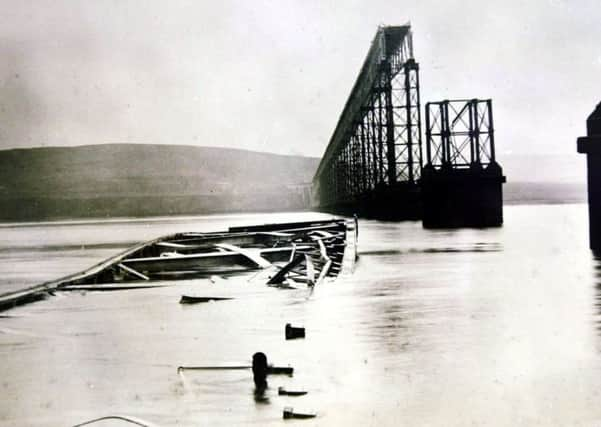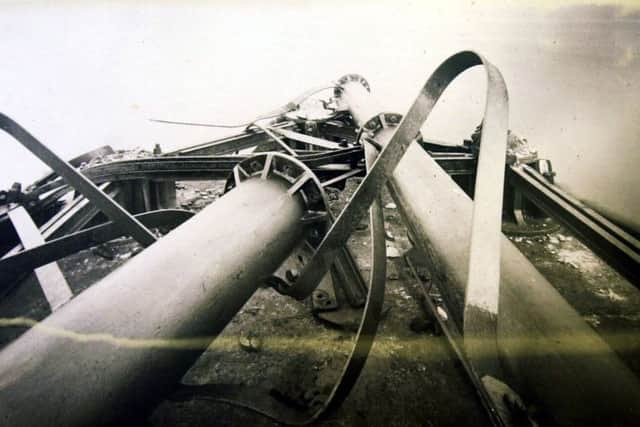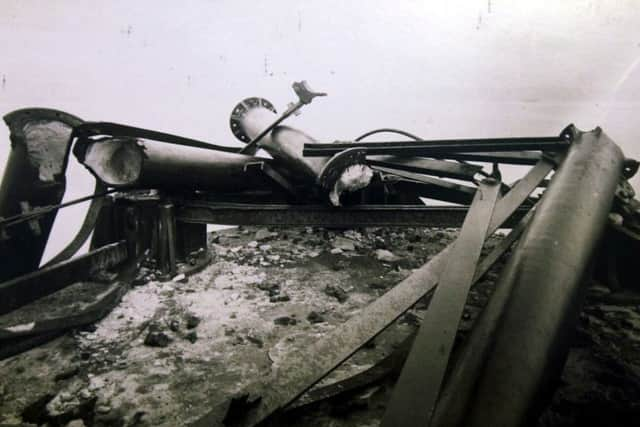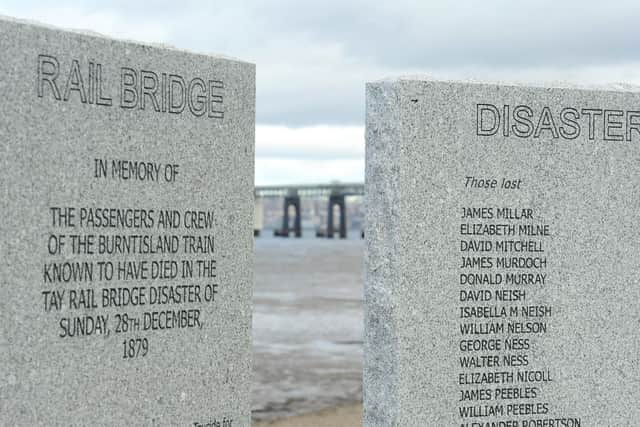Remembering the Tay Bridge disaster


On this night in 1879, the Tay Bridge Disaster occurred, claiming 75 lives and shocking the population.
The disaster happened after the centre section of the bridge, known as the “High Girders”, collapsed under a six carriage northbound train which was plunged 130ft into the freezing waters of the Tay.
Advertisement
Hide AdInitially, the North British Railway company stated that there had been 300 deaths and soon gained international press coverage including newspaper reports in Australia.


However after bodies were discovered months later, it was confirmed that 72 passengers and three crew members had lost their lives in the tragedy, nine of the dead were children.
The youngest, Bella Neish, was just four-years-old and was the only casualty to be washed upriver.
Designed, constructed and maintained by Sir Thomas Bouch, it was seen as a marvel of engineering when completed in early 1878.
The longest bridge in the world at the time, it was subsequently given the royal seal of approval by Queen Victoria.


It stood for less than two years.
The initial inquiry found that the Sir Bouch, had not made sufficient allowance for wind pressure and that the contractor had used imperfect metal castings, although Bouch claimed that the collapse may have been the result of the train derailing and colliding with the girders.
Advertisement
Hide AdHis case was disregarded and Sir Bouch was widely blamed for the tragedy and the authorities decided to not consider his design for the Forth Road Bridge which was given to Sir Benjamin Baker and Sir John Fowler instead. He died of ill health brought on by his ordeal shortly thereafter.


An extensive inquiry was carried out, including numerous witnesses, experts and reports. To this day it is unknown whether the strong winds that night were to blame, the poor design or the mechanical failure.
Advertisement
Hide AdA new doubletrack bridge was designed by William Henry Barlow and built by William Arrol & Co, 18 metres upstream of, and parallel to, the original bridge. The foundation of the new Tay Bridge was laid in 1883 and was opened on 1887 and remains in use today.
The foundations of the collapsed bridge can still be seen today.
The train driver who died in the disaster was commemorated in 2011, more than 130 years after the tragedy. An inscribed headstone was placed on the previously unmarked grave of David Mitchell at Leslie Cemetery in Fife.
In December 2013, granite cairns with the names of the victims were erected on both sides of the river, in Dundee and Fife.
